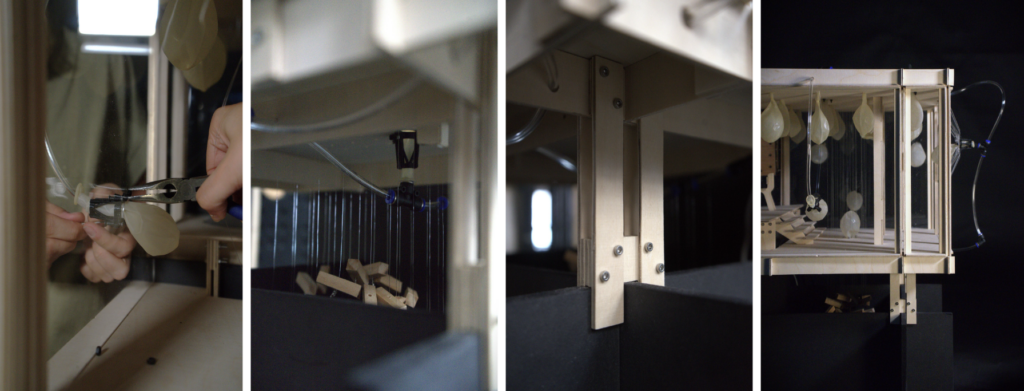Balloon-Driven Spatial Alteration
Phenomenon: What is Pressure?
Pressure and Volume are inversely relatable. When one quantity increases, the other decreases proportionally. If the volume of the space is increased, the pressure inside the volume is decreased. This is applied in pneumatic structures and building environments to balance the indoor environment and structural stability. Our project investigated this formula with regards to space and air flow, constraining the membrane with positive and negative spaces, and testing for rigidity through movement caused by pressure.

Pressure is not experienced visually, but it is very applicable in our daily lives in the spaces we inhabit, such as in HVAC systems for efficiency, Hospitals for sanitization and treatment, and Fire stairs for separation and safety.
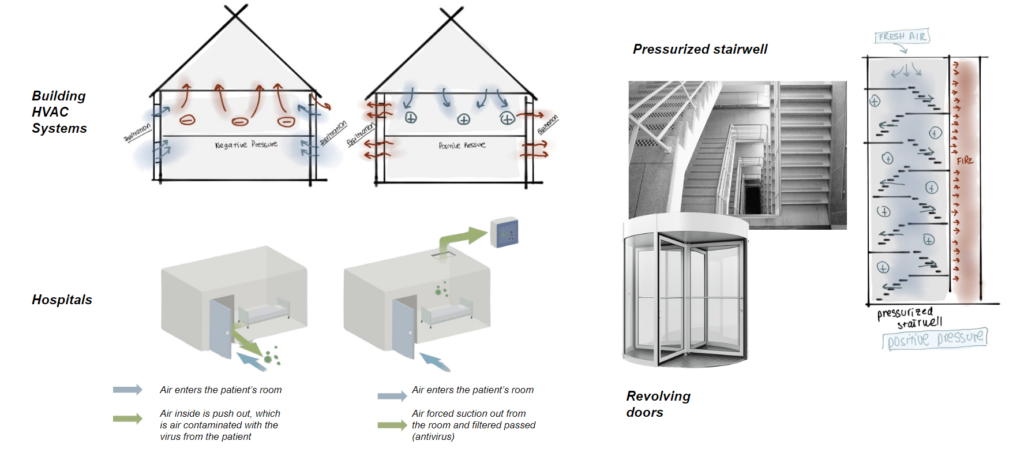
It has an major impact on the human body. Unstable pressure within buildings can cause respiratory and mental illnesses along with body pains, migraines and apnea. Positive pressure, along with a healthy indoor environment eases our respiratory functions, reduces risks of mental and physical health and allows for better cognitive performance.
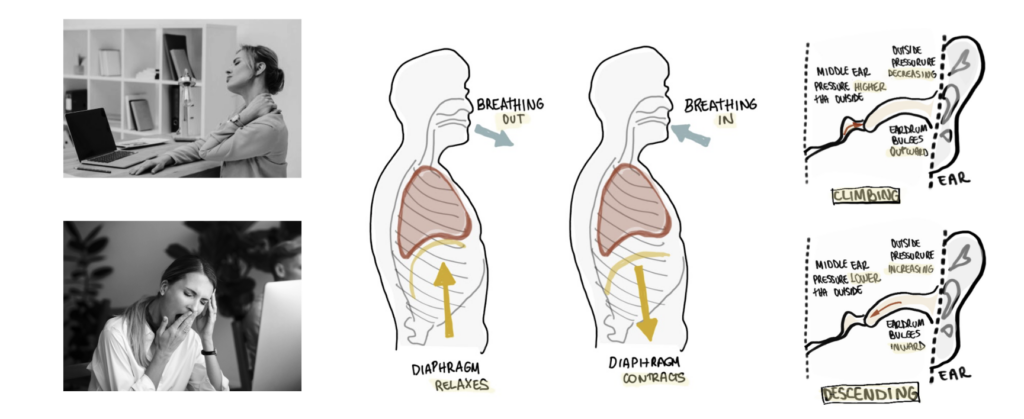
So How do we visualize pressure and the impact on space?
We started by testing, using different particles inside the balloon like thicknesses of paint, grain, paper sizes and the different distance of the tube, to see how the membrane would inflate and interact with each other. From there, tests were made to visualize negative pressure caused by the suction from the machine and rigidity caused from inflating the balloons using some structural elements like plates and strings
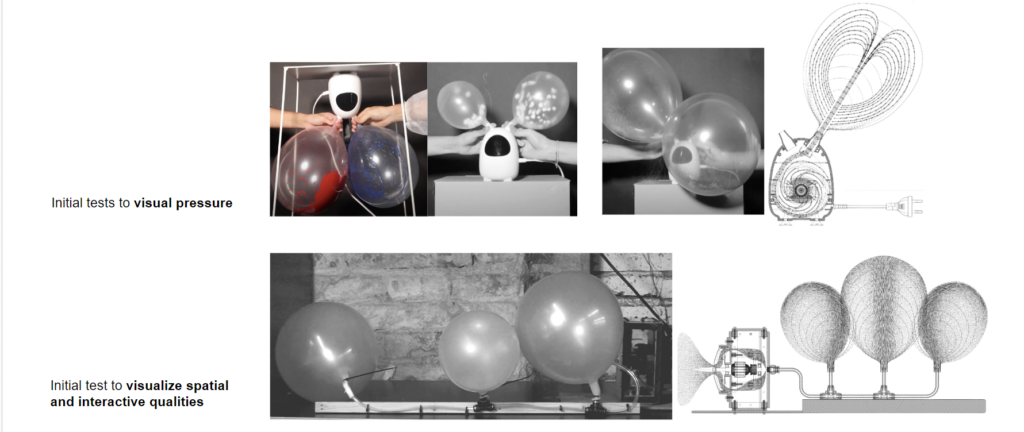
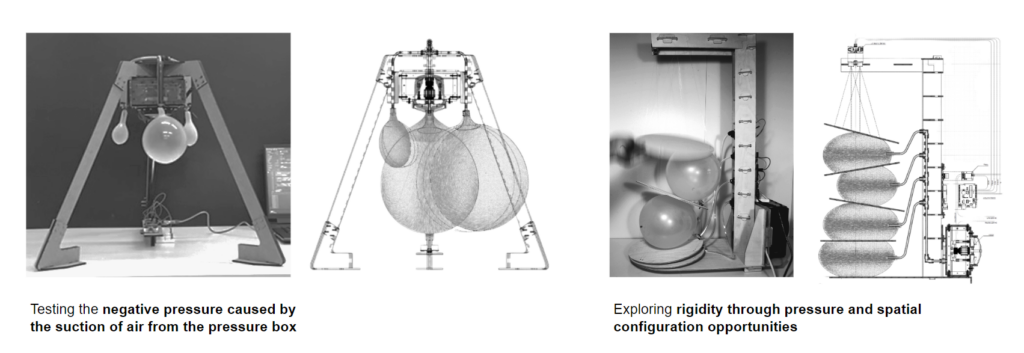
Using other materials, distance of air flow and ways of constraining the balloons, to analyse the spatial qualities we can create through the combination of these methods
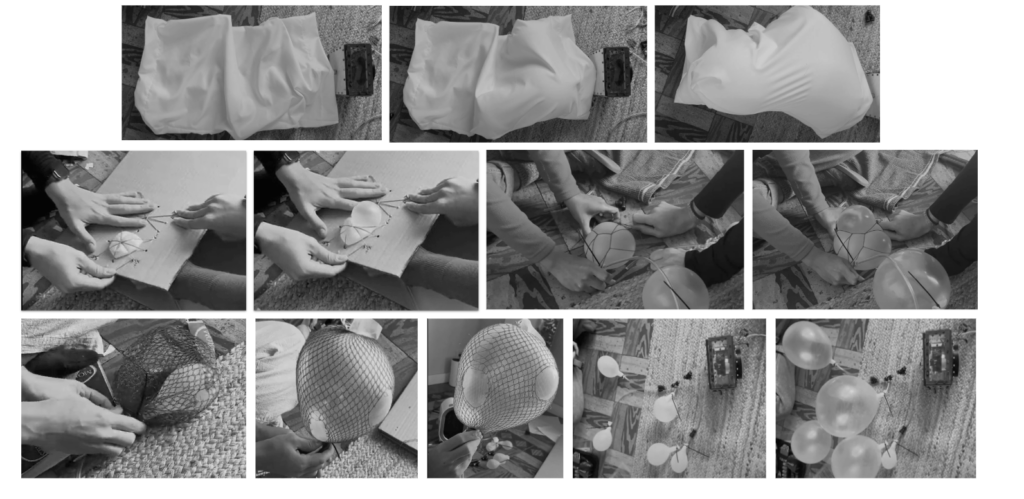
How pressure can be inhabited through some of these precedents, which are exploring the impact of inflatable structures on positive and negative spaces
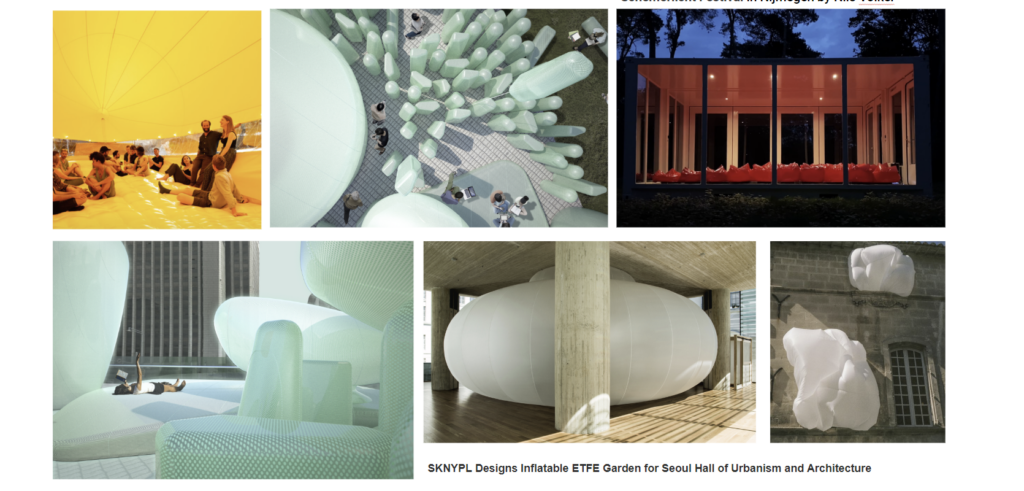
We imagine this space being used by someone whos working from home and require their living room to be reconfigured into a physical activity space, in our case – dance. We assess that for dancing, the human would require flexible amount of clear space and for desk work, they would require more intimate space. And these are the criteria we are using for our room configuration
Dancing activity
To facilitate for flexible needs, our user is able to perform a physical activity by reconfiguring her living room into a bigger space. A dancer requires flexible amount of clear space

Home Office activity
The user has the ability to create pockets of zones to work from home for focus and coziness. Office work requires minimal space.

Climate Humans breathe about 20,000 times, consuming 7000-12000 liters of air per day.
A home requires natural ventilation, a max rate of 0.5 ACH (air circulation per hour) to maintain healthy indoor environments, reducing the risk of asthma, allergies, fatigue and lower mental performance.

Similarly, a home requires natural ventilation, a max rate of 0.5 ACH (air circulation per hour) to maintain healthy indoor environments, reducing the risk of asthma, allergies, fatigue and lower mental performance.



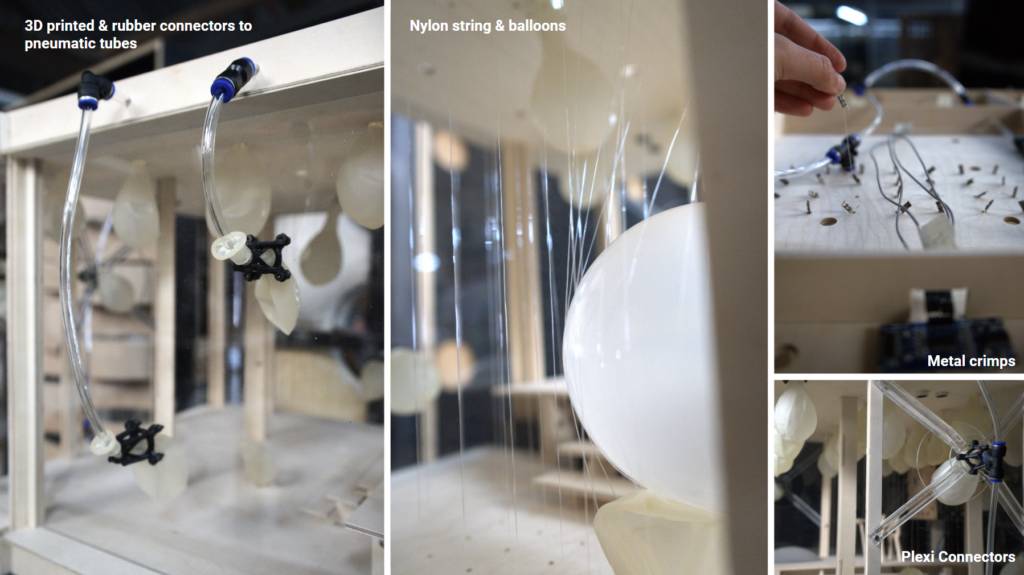
Dancing vs Working
In these scenarios, the user will be allowed to dance through the balloons, which requires a constant stream of ventilation, rather than the home office, placed in the smaller area, which requires only occasional natural ventilation to facilitate concentration. The range of movement, circulation and pressure transforms as the space reconfigures through the deliberate inflation and deflation of balloons in specific zones, altering the dimensions, access points and intent.
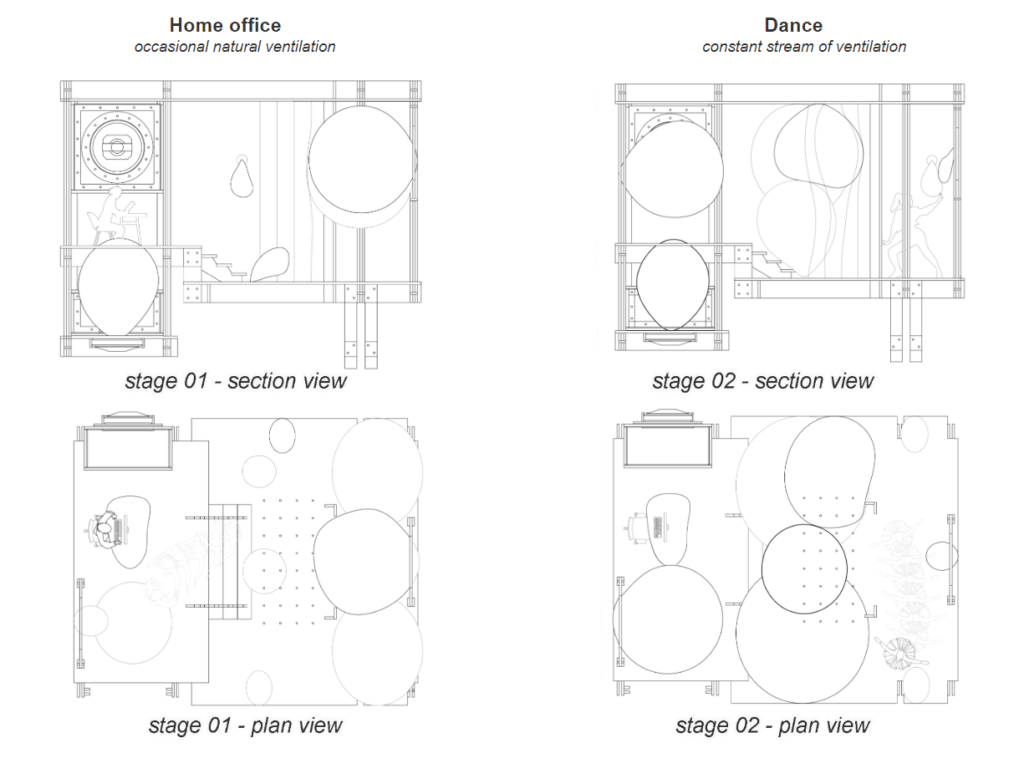
The sensors, which react based on the distance from the balloon while it operates, trigger two pressure machines that create two significant states within the 5m x 7m space – positive pressure and inflation.
Thus, resulting in an altered indoor environment, including:
air quality, spatial configuration, range of movement, and ultimately human behavior.
Positive pressure is created with sealed openings from 9 inflated balloons and the release of air inside the space through the pressure machines. Positive pressure assists with breathing for individuals with respiratory illnesses and maintains airway patency, for preventing apnea. Whereas, when a window “opens”, an equilibrium of indoor and outdoor pressure is achieved through airflow.

